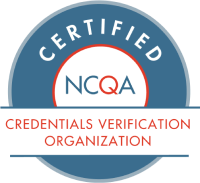With virtual integration, organizations can achieve many of the goals of vertical consolidation at a much lower cost.
Many industry leaders believe that consolidating hospitals, physician groups and health plans under unified ownership will result in better and more efficient care. That argument has some merits. However, vertical consolidation is costly. For example, health plans that embark on the vertical consolidation route must invest millions in acquiring new physician practices, hospitals and medical groups.
Oftentimes, these acquisitions mean taking on substantial debt—with no guarantee that the investments will pay off in the long run. But there is an alternative to vertical consolidation: virtual integration. With virtual integration, organizations can achieve many of the goals of vertical consolidation at a much lower cost.
Here’s how it works.
What Is Virtual Integration?
The goal of virtual integration is to link different parts of the healthcare ecosystem so that patients receive better care. But virtual integration doesn’t achieve this through acquisition. Instead, virtual integration focuses on patient management agreements, provider incentives and information systems. The idea is that individual components of the healthcare ecosystem will still operate autonomously, focused on their core competencies. But they partner together so that they can provide more seamless care.
The following are a few examples of basic building blocks of virtual integration:
- Operating system of agreements and protocols for managing patient care—Partners agree on how best to deliver patient care and what each party is responsible for doing.
- Incentives—A framework of incentives determines how physicians and hospitals are paid across the partner network.
- Linked information systems—Providers and administrators can more easily share information and patient records. This enables greater administrative efficiency and reduces risk.
- With virtual integration, organizations can achieve many of the goals of vertical consolidation at a much lower cost.
- Virtual integration allows for better integration of healthcare without requiring massive investments or organizational restructuring.
What Does Virtual Integration in healthcare Look Like?
There are many examples of virtual integration successes in healthcare. Walgreens and LabCorp recently announced that they will be expanding their partnership. Over the next four years, LabCorp will be opening 600 patient service centers at Walgreens locations across the country. This includes 17 locations where LabCorp has already opened a service center. The LabCorp service centers, located close to the pharmacy area inside Walgreens, offer patients healthcare information and diagnostic services.
Thanks to this partnership, Walgreens customers now have better access to these services, which remain fully operated by LabCorp. In another recent example, Humana and Iora Health have expanded their partnership into additional states. Iora seeks to reduce emergency room usage by offering innovative primary care. Now, Humana Medicare Advantage beneficiaries have access to Iora primary care practices. Patients thus enjoy access to high-quality providers while Iora practices remain independently operated. Virtual integration is also impacting Medicaid plans.
In Florida, the state’s Agency for Health Care Administration (AHCA) has awarded grants to Evolent Health partners. This enables Evolent to partner with health systems in the state to provide health plan administration and operational services across five regions in the state. As these disparate examples demonstrate, virtual integration is creating opportunities for more integrated healthcare in numerous ways. And it’s accomplishing these goals without the expense and headaches sometimes caused by vertical consolidation.
Improving the Business of Healthcare in Order to Impact the Outcomes of Healthcare
andros is a new kind of CVO. Built on sophisticated technology and a partnership mind-set, we help your team improve your credentialing function to spend less time and manual effort on repetitive data entry tasks. andros’s technology automates the monotonous verification work required for compliant credentialing and simplifies everything else: the application, committee review prep, approval, ongoing monitoring, recredentialing and reporting.
This is how we transform the credentialing function into a fast, compliant and cost-effective process for healthcare organizations that are dissatisfied with inefficiencies that lead to burned-out employees, frustrated providers and missed business opportunities.
“Ultimately, choosing andros came down to a need…to move quickly enough to provide our members with the care they deserve while staying compliant. It’s essential for us to know without a doubt who is credentialed and when, and andros has consistently offered peace of mind with its reliability.” ALICIA BECKETT, CLOVER


